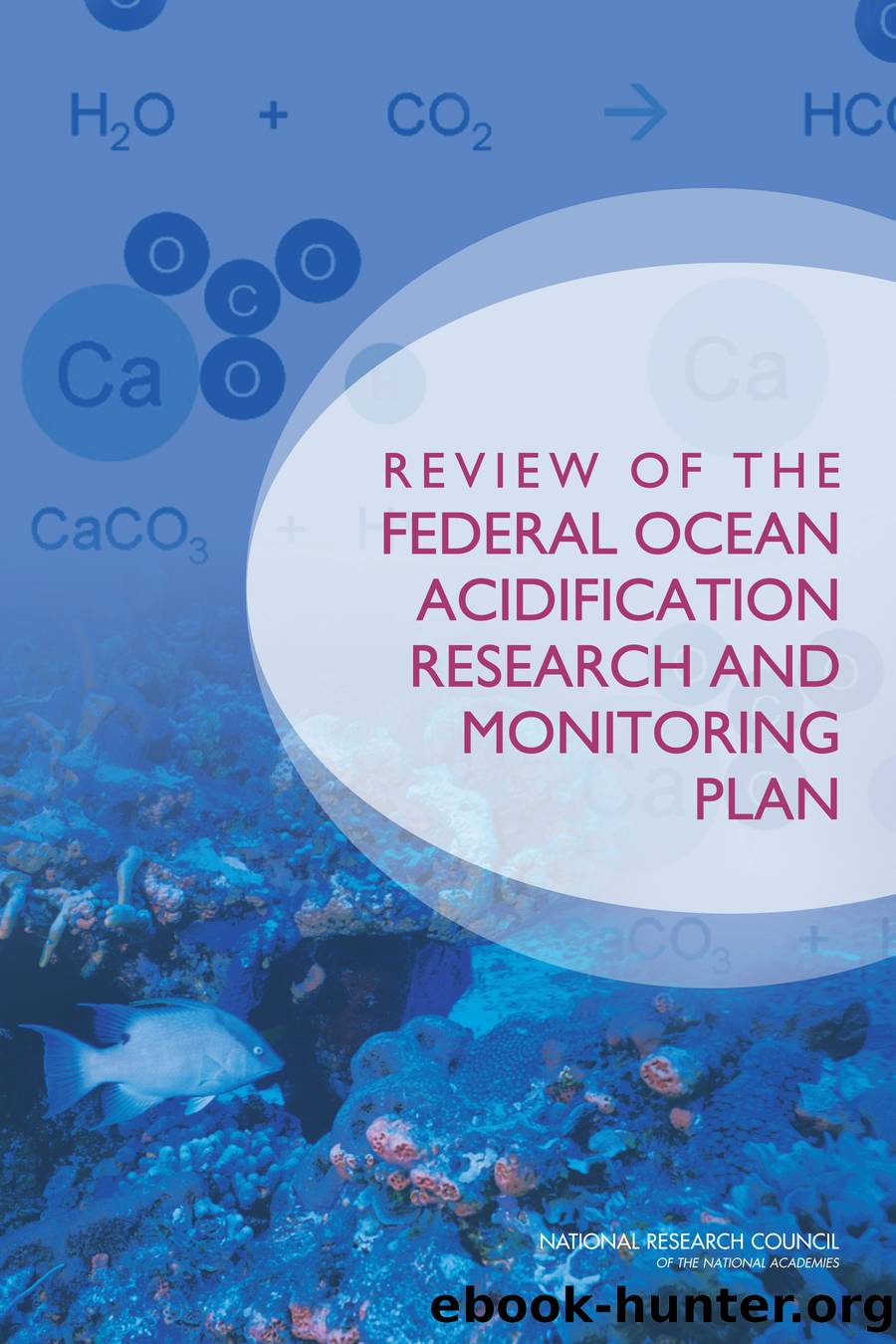Review of the Federal Ocean Acidification Research and Monitoring Plan by Committee on the Review of the National Ocean Acidification Research & Monitoring Plan

Author:Committee on the Review of the National Ocean Acidification Research & Monitoring Plan
Language: eng
Format: epub
Tags: ebook
Publisher: The National Academies Press
Published: 2013-07-19T00:00:00+00:00
THEME 3: MODELING TO PREDICT CHANGES IN THE OCEAN CARBON CYCLE AND IMPACTS ON MARINE ECOSYSTEMS AND ORGANISMS
The FOARAM Act includes âmodelingâ as a Program Element, âto predict changes in the ocean carbon cycle as a function of carbon dioxide and atmosphere-induced changes in temperature, ocean circulation, biogeochemistry, ecosystem and terrestrial input, and modeling to determine impacts on marine ecosystems and individual marine organisms.â
The introduction to Theme 3 (page 27 of the Strategic Plan) provides a summary of the current status of the field of modeling and highlights some challenges, along with an appreciation of its current and future evolution. This section presents a fair amount of information, although it is not always sufficiently supported by literature references. The section falls short, however, in describing how these model developments will contribute to reaching the main objectives outlined in this particular Program Element of the FOARAM Act and, more generally, how modeling studies can help to achieve the broader objectives of the FOARAM Act. In the latter context, there is inadequate integration of modeling with the other Themes in the Plan.
To strengthen the Strategic Plan, the committee believes that Theme 3 could be improved if it identified how models can contribute to ocean acidification research at present and with what level of certainty (see Box 3.1).
The scope of modeling activities listed in the Strategic Plan is broad, ranging from process-based understanding (level of the individual cell to organisms) to broader-scale biogeochemical functions (e.g., primary production, carbonate production, etc.) to impact assessments including socioeconomic analyses. Similarly, the Strategic Plan discusses model studies that span phenomena over large scales in time and space. Scale appears as a central issue to modeling in both biological and physical domains. The structure of this section would be improved by categorizing along scales specific to the target processes or questions. Furthermore, the goals of Theme 3 are mainly expressed in terms of model development and less in terms of scientific objectives (which are the âdriversâ of model development). This limits the extent to which the modeling efforts of Theme 3 can be linked to goals found in other Themes. For example, no specific mention is made of how the improved understanding of processes and mechanisms (as part of understanding the impacts of ocean acidification) will be incorporated into improving models. Because this timely transfer of knowledge may prove difficult, the strategic plan needs to give specific consideration to how this can be facilitated, in particular when developing the implementation plan. The development and implementation of major oceanic processes (e.g., carbonate production and dissolution, nitrogen cycling, carbon assimilation) and biological processes (e.g., growth and recruitment along life stages) as a function of seawater carbonate chemistry all have clear relevance to other Themes. Thus, better integration of modeling with relevant sections in other Themes of the Strategic Plan is needed. For example, how will the monitoring activities in Theme 1 benefit fromâand provide assistance toâmodeling? What are the likely contributions of modeling to the evaluation of local mitigation and adaptation measures, an important issue within the socioeconomic framework of Theme 5?
BOX 3.
Download
This site does not store any files on its server. We only index and link to content provided by other sites. Please contact the content providers to delete copyright contents if any and email us, we'll remove relevant links or contents immediately.
The Lonely City by Olivia Laing(4768)
Animal Frequency by Melissa Alvarez(4424)
All Creatures Great and Small by James Herriot(4267)
Walking by Henry David Thoreau(3921)
Exit West by Mohsin Hamid(3791)
Origin Story: A Big History of Everything by David Christian(3665)
COSMOS by Carl Sagan(3584)
How to Read Water: Clues and Patterns from Puddles to the Sea (Natural Navigation) by Tristan Gooley(3430)
Hedgerow by John Wright(3313)
How to Read Nature by Tristan Gooley(3290)
The Inner Life of Animals by Peter Wohlleben(3282)
How to Do Nothing by Jenny Odell(3263)
Project Animal Farm: An Accidental Journey into the Secret World of Farming and the Truth About Our Food by Sonia Faruqi(3189)
Origin Story by David Christian(3169)
Water by Ian Miller(3155)
A Forest Journey by John Perlin(3042)
The Plant Messiah by Carlos Magdalena(2900)
A Wilder Time by William E. Glassley(2833)
Forests: A Very Short Introduction by Jaboury Ghazoul(2814)
